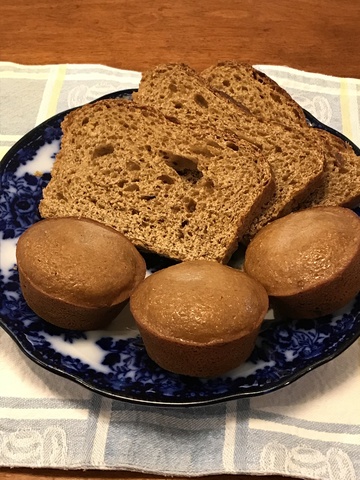
and New England Third Bread
As we emphasized in earlier posts on the evolution of Rye and Indian (aka Ryaninjun) bread into Boston Brown Bread, New Englanders from the first years of settlement wished to eat bread made primarily of wheat. (See the first post in the series, Growing Grains and Ingrained Ideas, for an explanation of these corn-related terms and how we're using them.) For centuries, though, this goal was unattainable for most. Wheat did not grow well in the region's rocky soil and what did grow was susceptible to a killing fungus known as "the blast." Imported from the mid-Atlantic colonies, it was an expensive luxury which only the wealthy could consume on a regular basis. The Connecticut River Valley, with rich alluvial soil suited to wheat growing, was the one area in New England where wheat was plentiful. But things changed with the opening of the Erie Canal in 1825. Wheat imports from farming regions to the west became more plentiful and cheaper. Later in the century, mechanized milling further reduced the cost of wheat, though some began to complain that industrial-milled wheat, shorn of its germ and bran, was tasteless. It was certainly less nutritious. Read More

